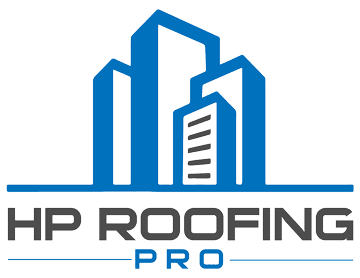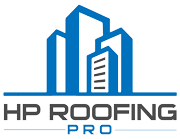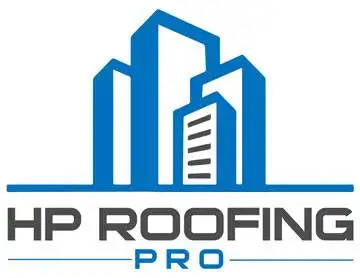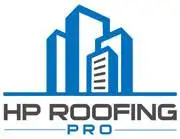Mon - Fri 7:00 am - 4:30 pm
601 South Palm Avenue, Alhambra, CA 91803
Posted by thomas ferriere No Comments on Cool Roof Coating vs Covering: An In-Depth Comparison Roofing
Cool Roof Coating vs Covering: An In-Depth Comparison
Traditional commercial building roofs can raise energy costs because of absorbing excess heat. Traditional roofs can contribute to higher cooling requirements and overwork your HVACs.
Installing a cool roof is a brilliant solution to overcome the problem and even help combat the heat island effect in your area. Cool roofs reflect the sun’s rays, which leads to significant energy savings.
Consider cool roofing if you build or own commercial buildings in sunny areas. One decision you’ll need to make is whether to choose a cool roof coating or covering. Let’s explore the differences between the two and help you make an informed decision.
What Are Cool Roof Coatings?
Cool roof coating is a layer of material applied to an existing roof surface, regardless of the roofing material already in place. The coating is designed to reflect solar radiation and reduce heat absorption, making the building cooler. Examples of cool roof coatings include elastomeric, silicone, acrylic, polyurethane, and asphalt emulsion coatings. For a cool roof, you can apply the coating on roof types such as metal, asphalt, and single-ply membranes.
Here are the cool roof coatings available.
Elastomeric Coatings
Elastomeric coatings are a popular choice for cool roofs because they are durable. These coatings are light-colored—which, like a white cloth, prevents heat retention.
Silicone Coatings
Silicone is an excellent choice if you’re looking for a quick, affordable coating. The product is a strong moisture and UV-resistant solution for roof insulation.
Silicone is an easy option because you only have to power-wash your roof, apply a primer, and install it. While it can be more expensive than many coatings, it’s worth it because of its extra roof protection benefits.
Acrylic Coatings
We highly recommend using acrylic coatings for your cool roof applications. These coatings offer a cost-effective solution that helps reduce the amount of heat absorbed by the building, resulting in lower energy costs and a more comfortable interior for building occupants.
One of the greatest advantages of acrylic coatings is their ease of application. They can be applied using various methods, such as a brush, roller, or spray, and are suitable for use on various surfaces, including concrete, metal, and asphalt. This versatility makes them ideal for residential and commercial roofing projects.
In addition to being easy to apply, acrylic coatings offer excellent moisture and UV resistance, which helps prevent premature roof deterioration. This can help extend the life of your roof, saving you money on costly repairs and replacements in the long run.
Another benefit of acrylic coatings is their reflective finish, which helps reduce the heat absorbed by the building. This is particularly important in warmer climates with high air conditioning costs. By reflecting sunlight away from the building, acrylic coatings help keep the interior cooler and more comfortable, reducing the need for air conditioning and lowering energy bills.
Acrylic coatings are also environmentally friendly, as they are made of low-VOC (volatile organic compounds) materials that have minimal impact on indoor air quality. Furthermore, reflecting sunlight away from the building help reduce the urban heat island effect and minimize the building’s carbon footprint.
By choosing acrylic coatings for your roofing needs, you can save money, improve energy efficiency, and reduce your environmental impact.
Polyurethane Coatings
Polyurethane is a great solution for multi-purpose roof coating. Polyurethane coatings are highly durable and can withstand various environmental conditions, such as exposure to UV rays, moisture, and chemicals. They come in various colors and finishes, making them popular for decorative applications.
Polyurethane can do wonders by creating a super effective protective roof coating. It can help block UV radiation, hence creating some very cool interiors. As a result, it helps reduce your energy bills by reducing heavy dependency on your AC.
Asphalt Emulsion Coatings
Asphalt emulsion is a low-cost option with a dark finish suitable for absorbing heat in cooler climates. It’s less reflective than other types of coating, hence not the best cool roof coating in warmer climates.
What Are Cool Roof Coverings?
A cool roof covering, on the other hand, is a specially designed-roofing material that reflects sunlight and reduces heat absorption. A cool roof covering is typically installed as a replacement for an existing roof with a conventional, non-reflective covering. Examples of cool roof coverings include reflective shingles, tiles, or sheets made from asphalt, metal, or membrane coatings.
Here are some of the most common types of cool roof coverings.
White or Light-colored Roofs
Light coloring is an effective technique to make your roof energy-efficient. Light-colored roofs can reflect sunlight, keep the building cool, and reduce reliance on your AC. Some materials used for white roofs include PVC, TPO, EPDM, and light color metal.
White-colored roofs help to beat the heat by not absorbing it in the first place. For example, light-colored metal roofs with overhangs can reflect the heat and shade the walls for higher performance.
Even dark metal colors for your roofing can beat relatively light shingles. They can keep less heat and help to keep your building cooler.
Solar Reflective Shingles
Solar reflective shingles are a cheap solution designed to reduce heat absorption. These shingles have special granules that reflect sunlight. And they are available in a range of colors to match the aesthetic of the building.
Shingles can be highly effective for commercial cool roofing. But they can also be environmentally disastrous. Asphalt shingles, for example, are not recyclable and can be dangerous with a faulty AC.
Durability and Cost
While coverings need less preparation and labor, their materials can be more expensive. But remember that the cost of coating or covering depends on your project. Factors such as the size of your building and roofing material can affect your costs.
Most types of cool roofs can provide enough coating to last for decades. And most commercial roofs can last between 20-30 years. But, the lifespan may depend on installation, weather, and the roof’s slope.
Performance
A cool roof’s performance can depend on the quality of the materials and the installation. A quality coating or covering is essential for maintaining the needed reflective properties.
Choose certified materials from EPA Energy Star or US Green Building Council for guaranteed quality. That way, you can be sure your cool roofing system will deliver as expected.
The best cool roofing materials usually have a high solar reflective index. This means they can generate more coolness needed for lower energy costs.
Proper installation plays a crucial role in ensuring your roof performs as intended. Any installation errors can compromise the effectiveness of your system.
Maintenance and Repairs
Cool roof coatings are easier to maintain and repair than cool roof coverings. You can clean roof coatings with a pressure washer or mild detergent. And you can repair damaged areas with an extra coating material.
But cool roof coverings may demand more intensive maintenance. Most of the time, you may need to replace damaged tiles or repair metal seams.
Cool Roof Coating or Covering for Your Building?
Choosing between a cool roof coating and covering will ultimately depend on your specific needs and budget. Cool roof coatings are typically more affordable and easier to install. But they may only last a shorter time, unlike cool roof coverings.
We can assess your building’s needs, budget, and other factors to help you make an informed decision. Contact us to work with a reputable commercial cool roofing contractor in California.
Recent Posts
Categories
Recent Posts
Solar Leasing vs. Buying: What’s Best for Your Business?
Do you have any questions?
Contact us at The HP Roofing PRO office or submit a business inquiry online
Contact Us





